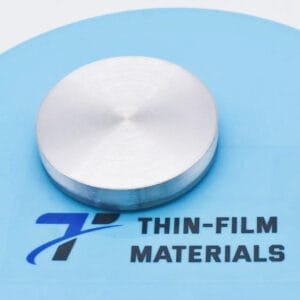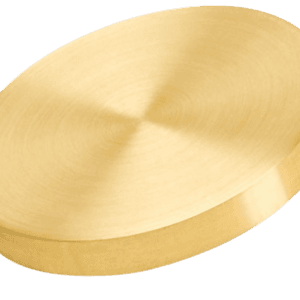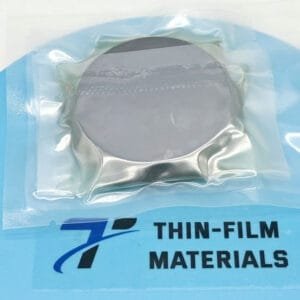Manganese Fluoride Sputtering Target
Introduction
Manganese Fluoride (MnF₂) Sputtering Target is an advanced material designed for thin film deposition in specialized optical, electronic, and research applications. With its unique chemical and physical properties, MnF₂ provides excellent performance in coating processes that require high transparency, low refractive index, and strong adhesion. It is particularly valued in optics and photonics due to its infrared transmission and stability under controlled sputtering environments.
Detailed Description
The Manganese Fluoride Sputtering Target is produced from high-purity MnF₂ powder, consolidated into dense, uniform targets suitable for both RF and DC sputtering systems. Typical purities range from 99.9% to 99.99%, ensuring low impurity levels that could otherwise interfere with film quality.
Purity: High-purity MnF₂ reduces scattering centers, improving thin film optical performance.
Density & Microstructure: Fine-grained, homogeneous targets enable consistent sputtering rates and stable deposition.
Size & Bonding: Available in diameters from 25 mm to 300 mm, with thicknesses of 3–6 mm, and customizable with indium or elastomer bonding to copper or titanium back plates for enhanced thermal management.
Optical Characteristics: Films derived from MnF₂ are transparent in a wide wavelength range, including the ultraviolet and infrared regions, making them suitable for precision optical devices.
Applications
Manganese Fluoride Sputtering Targets are used in a variety of industries and research fields:
Optics & Photonics – Coatings for infrared windows, lenses, and beam splitters.
Semiconductor Devices – Thin films for insulating or optical layers in microelectronics.
Energy & Displays – Functional coatings in photovoltaic devices and advanced display technologies.
Research & Development – Experimental thin films for material science and nanotechnology studies.
Technical Parameters
| Parameter | Typical Value / Range | Importance |
|---|---|---|
| Purity | 99.9% – 99.99% | Higher purity improves optical and electronic film quality |
| Diameter | 25 – 300 mm (custom) | Matches standard sputtering system holders |
| Thickness | 3 – 6 mm | Affects deposition stability and sputtering efficiency |
| Bonding | Copper / Titanium backing | Ensures heat transfer and target durability |
Comparison with Related Materials
| Material | Key Advantage | Typical Application |
|---|---|---|
| Manganese Fluoride (MnF₂) | Wide IR transparency, stable films | Optical & photonics coatings |
| Magnesium Fluoride (MgF₂) | Very low refractive index | Anti-reflective coatings |
| Calcium Fluoride (CaF₂) | High laser damage threshold | UV and laser optics |
FAQ
| Question | Answer |
|---|---|
| Can the target size be customized? | Yes, diameter, thickness, and bonding can be tailored for your system. |
| What is the delivery time? | Standard lead time is 2–3 weeks depending on order size and customization. |
| How is it packaged? | Vacuum-sealed, cushioned with foam, and shipped in export-safe cartons or wooden crates. |
| Which industries use MnF₂ most? | Optics, semiconductors, energy research, and advanced R&D labs. |
| Can it be bonded to a backing plate? | Yes, indium or elastomer bonding with copper/titanium plates is available. |
Packaging
Our Manganese Fluoride Sputtering Targets are carefully labeled and securely packaged to maintain quality during storage and transport. Vacuum sealing prevents contamination, while external protective cartons or wooden crates ensure the targets arrive intact and ready for use.
Conclusion
Manganese Fluoride Sputtering Targets offer a reliable and high-performance option for thin film deposition in optical, electronic, and research applications. With customizable dimensions, excellent purity, and stable sputtering characteristics, they are an essential choice for demanding coating projects.
For detailed specifications and a quotation, please contact us at [sales@thinfilmmaterials.com].





Reviews
There are no reviews yet.